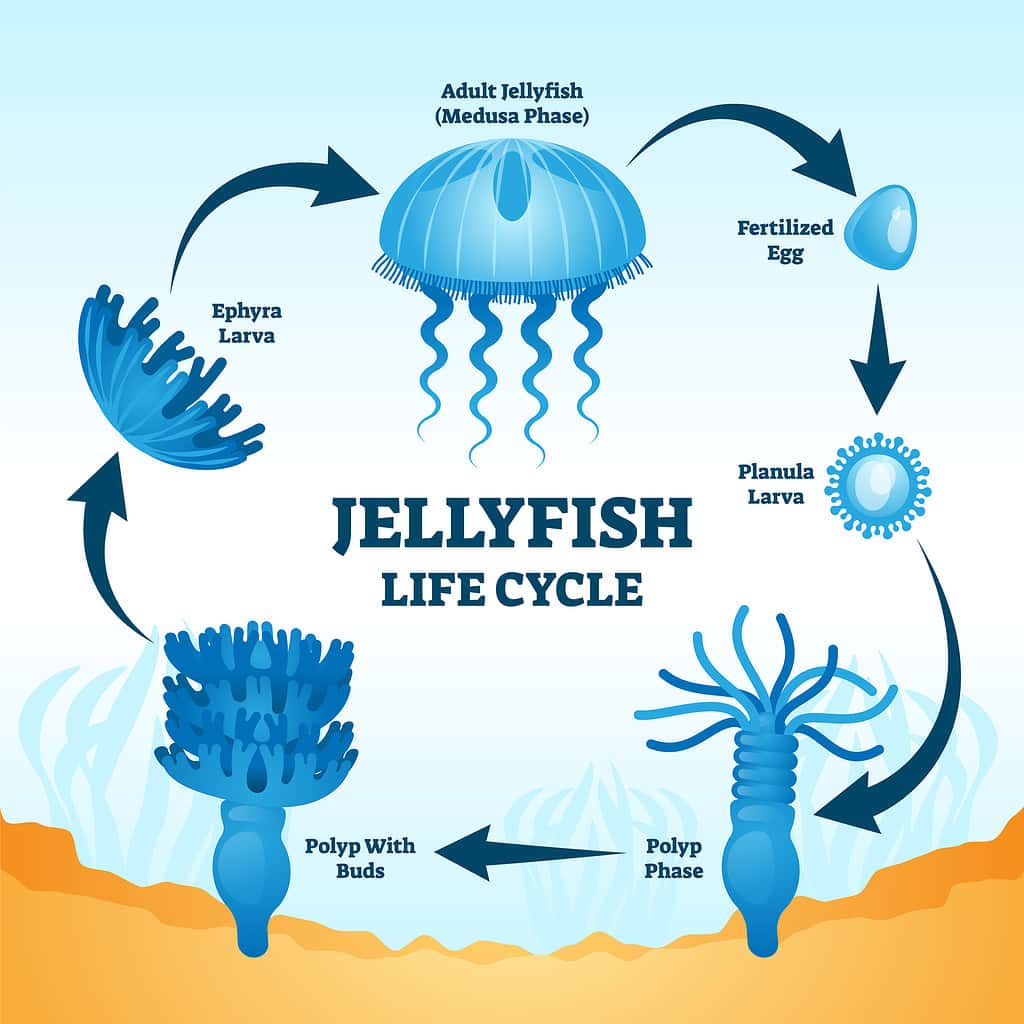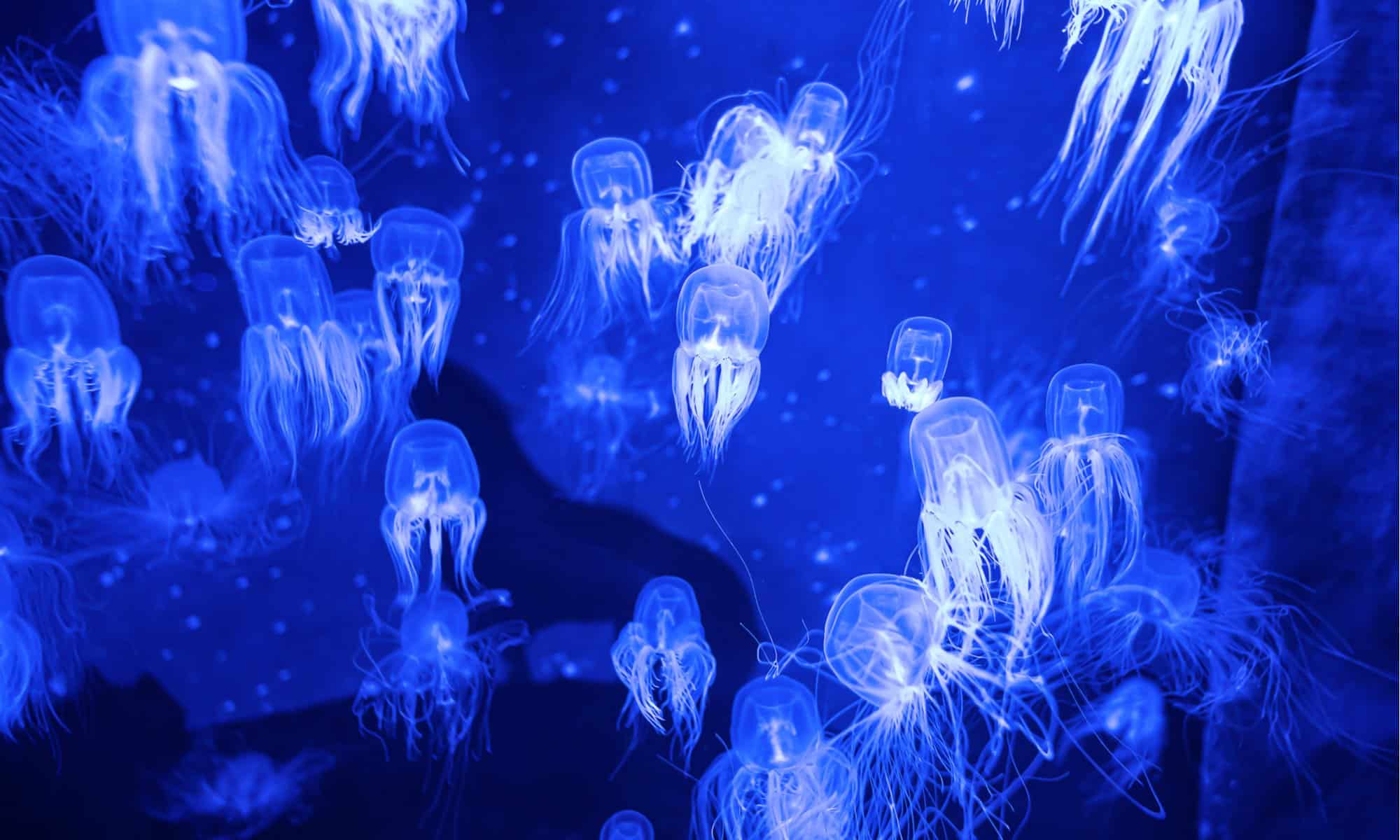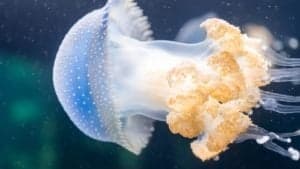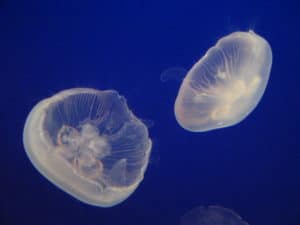
Jellyfish reproduction is full of interesting behaviors.
©VictorHuang/iStock via Getty Images
Jellyfish are found globally across the oceans, and even a few species are commonly found in freshwater. Some species prefer shallow water, while others have been discovered deep in the sea, spending time in the bottom of the marina trench.
They are relatively uncomplicated animals but have managed to survive and adapt throughout millions of years. In fact, according to some fossil records, it appears that jellyfish have existed in some way for over 500 million years, predating even dinosaurs. They may even be the oldest multi-organ animals in the world.
Based on what little is known about jellyfish and their lifespans, there may even be jellyfish that are relatively immortal. The Turritopsis nutricula jellyfish undergoes cellular transdifferentiation when threatened, making the cells that make up the jellyfish almost brand new again.
Thanks to NASA, scientists know jellyfish are not a big fan of gravity, once given the chance to survive in a place without any. Despite their simple appearances and nature, they have nerves that let them feel, they fall asleep, they eat, and they travel, just like any other animal. They also mate and reproduce.
To learn more about jellyfish reproduction, continue reading below.
Sexual Reproduction

The life cycle of a jellyfish in the picture above is based on sexual and asexual reproduction.
©VectorMine/ via Getty Images
Jellyfish reproduce sexually during certain parts of their life. With over 4,000 species of jellyfish out there, though, they don’t all do it the same way.
Congregation of Jellyfish
Interestingly, scientists have observed jellyfish performing mating rituals. In these rituals, the male will grab the female’s tentacles and pull them closer. There’s only one species that has been observed to do this mating ritual, Copula sivickisi.
Mixing of Eggs and Sperm
Depending on the species of jellyfish, there are two main ways to sexually reproduce. For the most part, most jellyfish release the sperm in the water. Then, females will eat the free-swimming sperm.
A male Copula sivickisi, at the end of their courtship dance, will pass a spermatophore, or a sperm packet to the female.
However, there are a few species that like a more direct approach. The males of these species will release sperm directly into the female’s mouth.
Under ideal conditions, fertilization happens once a day, either around dawn or dusk. Females will generally stop joining in on the mating rituals when their stomachs are full of sperm. Males will stop once all of their testes are empty.
The Eggs Hatch
Jellyfish don’t handle their eggs for long. Most of the eggs will reproduce within a day.
Once they hatch, they turn into a type of flatworm that is free-swimming. They are known as planula. These planula larvae can swim, or attach to structures under the water. They also have two sticky tentacles that help them capture prey.
Sometimes, these flatworms turn directly into adult jellyfish, but some settle onto rocks and undergo another stage of the lifecycle.
This stage is known as the polyp stage. These polyps are unique in that they can asexually reproduce.
Asexual Reproduction

The bright green creatures above are examples of jellyfish polyps.
©Shvetsov Sergey/Shutterstock.com
When jellyfish undergo a polyp stage, asexual reproduction is common. Generally, this reproduction involves creating little “buds,” which are mini jellyfish.
These little buds are small, often not more than two millimeters, or a fifth of a centimeter, in size. These little jellyfish, known as ephyra, feed on plankton and slowly grow into full-sized jellyfish, known as medusa.
There’s not much known about the asexual reproduction of jellyfish, or what determines what causes them to turn into polyps, and then what causes some of these polyps to reproduce asexually. It could be due to species, population size, habitat quality, or a mix of the above.
Thank you for reading! Have some feedback for us? Contact the AZ Animals editorial team.








